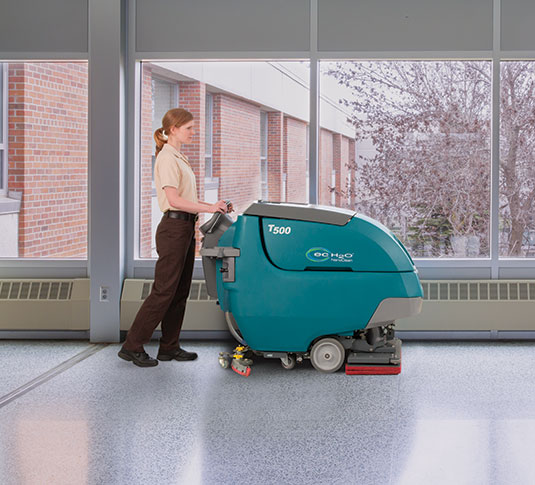Your shopping cart is empty.
Best Practices: How to Stage and Perform Summer Floor Restoration Work
Posted in Best Practices,
Floor restoration work is one of the most important tasks for facility maintenance crews. However, it can also be one of the most labor intensive and costly if not staged appropriately.
Unlike reoccurring cleaning tasks that may be conducted 365 days a year, restoration work must be approached differently for a variety of reasons, including:
- To ensure the safety of workers and building occupants,
- To cause the least amount of disruption,
- To reach the outcome without increased cost or time.
If floor restoration projects are not planned and executed appropriately, you may find teams of people standing around without the right training or equipment needed to do the job. Or you may discover you've used the wrong chemical, thereby ruining a floor while voiding a manufacturer's warranty.
Following a step-by-step procedure ensures the quality of the job and avoids reworks that cost time and money.
- Identify floor surfaces (substrates) - Bringing old floors up to maintainable standards is difficult and expensive. You must first determine the type of floor to ensure you treat the floor appropriately and safely.
- Check the warranty - In newer buildings, flooring may still be under warranty. Read the document carefully so you don't unintentionally void a warranty or restore a floor that's still covered by a manufacturer's warranty.
- Calculate job cost - Don't just calculate the square footage. You must consider room types, obstacles, fire exits and other aspects of a facility that could impact a floor restoration project.
- Provide the right equipment and supplies - Ensure you have all the needed equipment, whether manual or mechanized, to strip and reseal the floor, clean the grout (if applicable) and reinstall the detailed areas, such as kick plates, corners and baseboards.
- Promote worker safety - Crews should have the safety equipment they need to avoid injury during restoration projects. Personal protective gear is vital along with tools to make moving furniture and fixtures easier.
Dive deeper into floor restoration projects with AICS President Dave Frank. Listen to this prerecorded webinar for tips and tools of the trade from one of the industry's most respected facility maintenance professionals.


